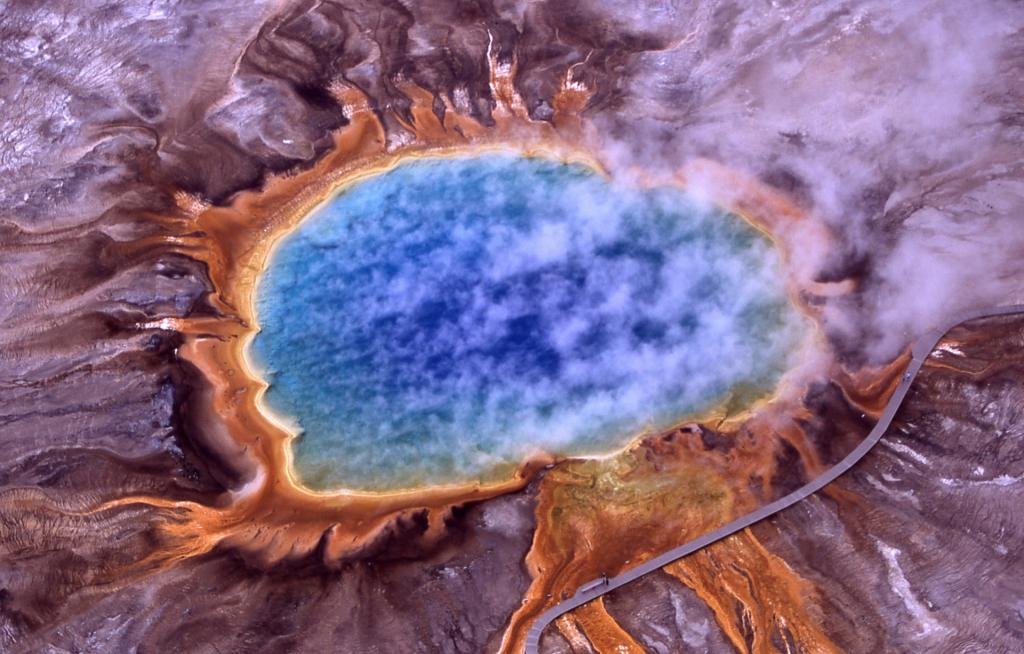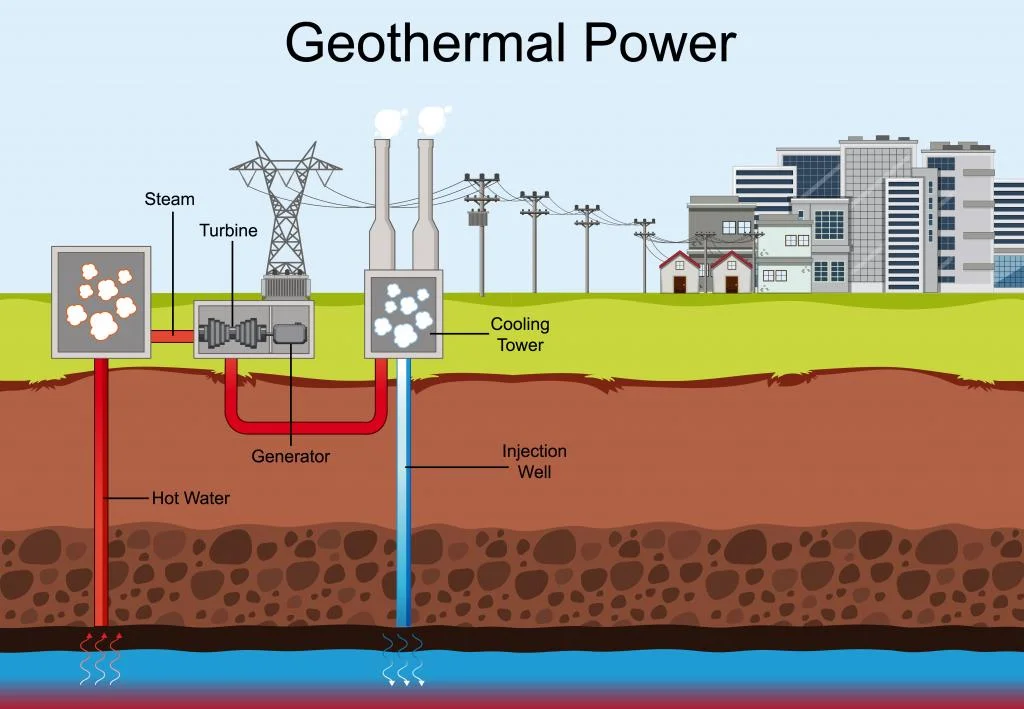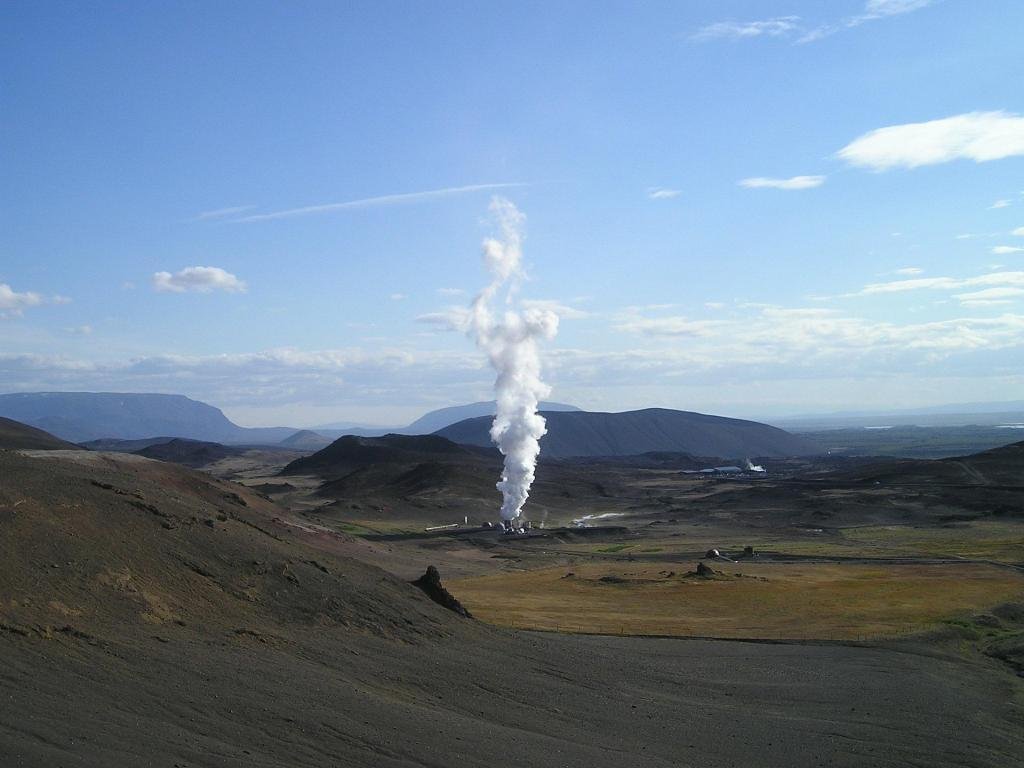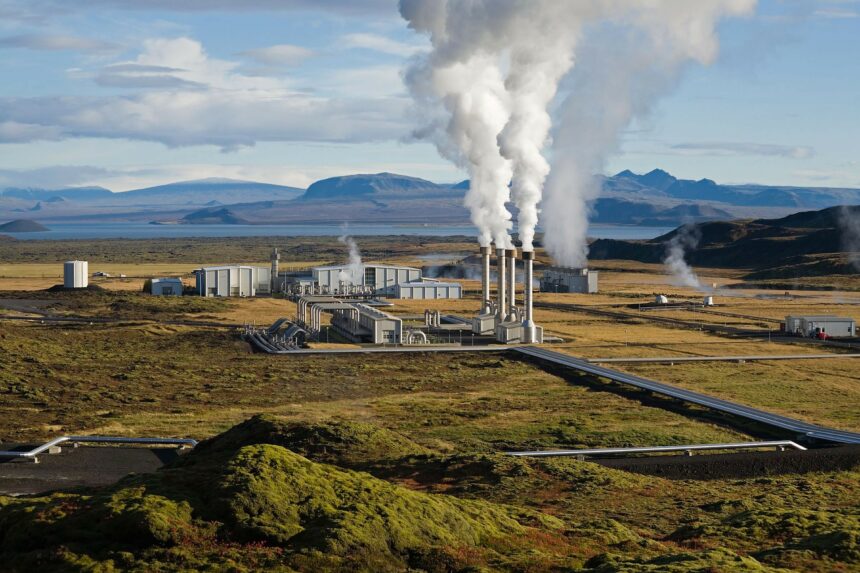What comes to mind when you think of renewable energy? Wind turbines, solar panels, and hydroelectric dams likely come to mind. But what about Geothermal Energy? It is a form of renewable energy that comes from the Earth’s heat. Although it is not as widely used as wind or solar power, geothermal energy has a lot of potentials.
In this blog post, we will explore whether geothermal energy is a renewable or nonrenewable resource and the pros and cons of it. We will also discuss some of the ways that geothermal energy can be used. So, read on to learn more about this fascinating source of renewable energy!
⫸ What is geothermal energy and how does it work?
Geothermal energy is a term that is not often heard, but it is one of the oldest forms of renewable energy. The word geothermal comes from the Greek words geo, meaning earth, and there, meaning heat.
This thermal energy generated and stored on the Earth. Thermal energy is the energy that comes from the heat of the earth’s core. These power plants use heat to generate electricity. Geothermal energy is a type of renewable energy that comes from the heat of the Earth’s core. The Earth’s core is incredibly hot, and this heat can be harnessed to generate electricity.

There are two main types of geothermal power plants: dry steam plants and flash steam plants. Dry steam plants use steam that has been heated by the Earth’s core to turn a turbine, which generates electricity. Flash steam plants use hot water that has been heated by the Earth’s core to produce steam, which is then used to turn a turbine.
Geothermal power plants can be built near geysers or volcanoes, or they can be built in areas where there is hot rock deep underground. Geothermal energy is a clean and efficient source of electricity.
⫸ How does geothermal energy work?
Geothermal power plants use steam turbines to generate electricity. Steam turbines are powered by steam, which is hot water that has been heated by the earth’s heat. The steam turns the blades of a turbine, which in turn spins a generator to create electricity.
Geothermal power plants can be built in areas where there is geothermal heat, which is hot rock or water beneath the earth’s surface. geothermal power plants use the earth’s heat to generate electricity.

The geothermal power plant at The Geysers, in California, is the largest geothermal power plant in the world. It generates enough electricity to power more than two million homes.
In geothermal energy, heat from the Earth’s interior is used to generate electricity or to heat homes and buildings. This clean, renewable resource has great potential for future growth. It is a sustainable source of energy that can be used to generate electricity or to heat homes and buildings.
⫸ How is geothermal energy considered a renewable or non-renewable resource?
It is a type of energy that comes from the heat of the earth. The earth’s heat can be used to generate electricity or to heat buildings and homes. Geothermal power plants tap into the earth’s heat to produce electricity. The geothermal fluid (hot water or steam) passes through a turbine, which spins a generator to produce electricity. The geothermal fluid is returned to the earth to be reheated and used again.
It is considered non-polluting and is a sustainable resource. There are three types of geothermal resources: magma ( molten rock), hot water reservoirs, and geysers. Magma is found deep within the earth and is the source of geothermal energy.
Geothermal energy is a renewable or non-renewable resource, depending on how it is defined and used. If It is used to refer to the heat within the Earth that drives geothermal activity, then it is considered a renewable resource. This is because the heat inside the Earth is produced by the radioactive decay of elements, which is a process that takes place over billions of years and is not affected by human activity.
However, if it is used to refer to geothermal power plants, which harness steam or hot water from geothermal reservoirs to generate electricity, then it is considered a non-renewable resource. This is because geothermal reservoirs are finite and will eventually be depleted if they are not replenished.
⫸ Advantages and disadvantages of geothermal energy:
Geothermal energy is a renewable resource that can be used to generate electricity. It is derived from the heat of the earth’s core and can be harnessed through a variety of methods, including geothermal power plants and geothermal heating systems.
- One advantage of geothermal energy is that it is a renewable resource. Unlike finite fossil fuels, they will never run out. In addition, it is environmentally friendly. It produces very little pollution and does not contribute to greenhouse gas emissions.
- However, geothermal energy also has some disadvantages. The most significant is the high upfront cost of establishing a geothermal power plant. This includes drilling deep wells to access the geothermal reservoir, as well as building the necessary piping and pumps.
- Another significant disadvantage is that it can only be harnessed in certain areas. There is also the risk that geothermal drilling could trigger earthquakes. In addition, geothermal power plants require a reliable source of water for cooling, which can be scarce in arid regions.
Finally, geothermal power plants have a smaller carbon footprint than other forms of energy generation, but they still release greenhouse gases into the atmosphere. As a result, geothermal energy is not a perfect solution to the world’s energy needs. However, it does have the potential to play a role in reducing our reliance on fossil fuels.
⫸ How can we use more geothermal energy in our homes and businesses?
Geothermal energy is a renewable resource that can be used to heat and cool homes and businesses. Additionally, this energy is available 24 hours a day, 7 days a week, making it a reliable source of power.
One way to use geothermal energy is to install a geothermal heat pump. Geothermal heat pumps are highly efficient and can reduce energy costs by up to 30%. These pumps use the earth’s natural heat to transfer thermal energy into buildings.
In the winter, the system takes heat from the ground and transfers it into the building, keeping it warm. In the summer, the process is reversed, and the system takes heat from the building and transfers it to the ground, helping to keep the building cool.
Another way to use geothermal energy is to harness the power of geysers and hot springs. These natural features can be used to generate electricity.
⫸ Ways to use more geothermal energy in the future to reduce our reliance on other forms of energy generation:
One of the most promising sources of renewable energy is geothermal energy. This is energy that is generated by the heat of the earth’s core. Geothermal power plants tap into this heat to generate electricity, and the technology is already well-established.

Geothermal power plants currently provide a significant amount of electricity in countries like Iceland and the Philippines. However, geothermal power has the potential to be even more important in the future. As our population continues to grow and the demand for energy increases, we will need to find ways to reduce our reliance on fossil fuels.
It could play a crucial role in meeting this demand. Unlike solar and wind energy, geothermal energy is constant and can be accessed 24 hours a day. In addition, geothermal power plants have a very small environmental impact. They emit little greenhouse gases, and they can be built in a variety of locations. For these reasons, geothermal energy is an important renewable resource that we should continue to explore.
⫸ Conclusion:
Geothermal energy is classified as a renewable resource, as the heat from within the earth is constantly replenished. It has many advantages, including that it is emissions-free, efficient, and reliable.
However, geothermal energy also has some disadvantages, such as the high initial investment cost and potential environmental impacts. Overall, it is a promising renewable resource that can help to meet our future energy needs.
So, what do you think? Is geothermal energy a renewable or non-renewable resource? Share your thoughts in the comments below. We’d love to hear from you!
⫸ FAQs:
1. What is Geothermal Energy?
Geothermal energy is heat that is generated within the earth. This heat can be used to generate electricity or to heat buildings.
2. Is Geothermal Energy a Renewable Resource?
Yes, geothermal energy is considered a renewable resource as the heat from within the earth is constantly replenished.
3. What are the Advantages of Geothermal Energy?
It has many advantages, including that it is emissions-free, efficient, and reliable.
4. What are the Disadvantages of Geothermal Energy?
While geothermal energy has many benefits, there are also some disadvantages to using this resource, such as the high initial investment cost and potential environmental impacts.
5. Is Geothermal Energy a Promising Renewable Resource?
Overall, this energy is a promising renewable resource that can help to meet our future energy needs.


Our electric bills have been increasing steadily for the past few months, so I was considering opting for other energy resources to generate electricity so we can save up on expenses. It’s great that you mentioned how geothermal energy is renewable so unlike fossil fuels, they are environmentally friendly and will never run out. I’ll have to contact geothermal contractor services so I can inquire more about it.
The articles you write help me a lot and I like the topic
I’m so glad to hear that the articles have been helpful to you! It’s wonderful to know that the topics we cover resonate with our readers. Your feedback is incredibly valuable, and it encourages us to keep producing content that informs and engages. If there are any specific subjects or questions you’d like us to explore in future articles, please feel free to share your thoughts. We’re always looking for ways to better serve our readers’ interests. Thank you for your support and for being a part of our community! 🌟📚